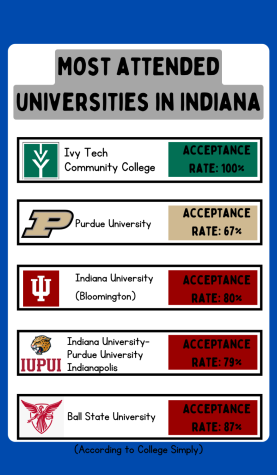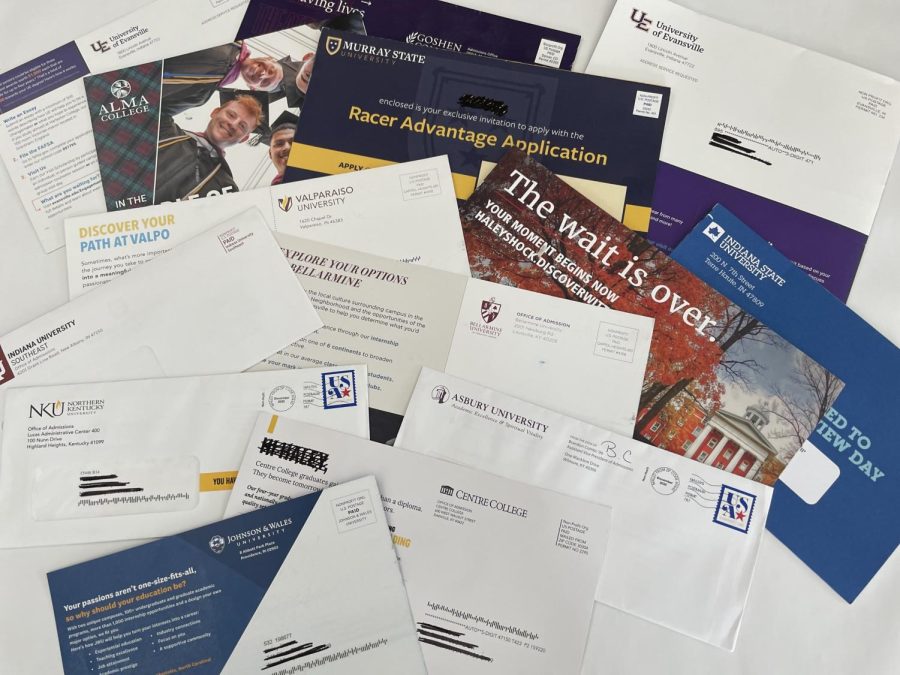How to: Pick the right college for you
October 27, 2022
Selecting where you’ll spend the next two to eight years of your life can be an extremely difficult decision, which many students struggle with.
The average student applies to about six colleges or universities according to Best Colleges. You don’t have to make the decision early, and applying to multiple schools gives you plenty of time and options to make your choice.
There are five big factors that are easy to research and can help you make your decision.
Selecting where you’ll spend the next two to eight years of your life can be an extremely difficult decision, which many students struggle with.
The average student applies to about six colleges or universities according to Best Colleges. You don’t have to make the decision early, and applying to multiple schools gives you plenty of time and options to make your choice.
There are five big factors that are easy to research and can help you make your decision.
Price Range
It is no secret that college is very, very expensive. Even with the many scholarships and federal aid (such as the FAFSA) that are available to students, the average public school graduate will have 26,320 dollars in student loan debt post graduation according to U.S. News.
While this factor shouldn’t greatly affect your decision, it is important to take into consideration how much the school you want to attend costs and whether it is a viable option for you.
According to The College Post, online school is typically more affordable than traditional in-person school because you don’t have to pay for facilities and support staff. Community College is also often a cheaper option, and if you’re looking to stay local, Ivy Tech has a campus in Sellersburg, IN.
Location
Location can be seen on a variety of levels. From the town to the state all the way to the country.
Oftentimes, tuition is much cheaper for in-state students than out-of-state students. According to a 2021 College Board report the average tuition and fees for an in-state student at a public four-year university was $10,740 and the average tuition and fees for an out-of-state student at a public university was $27,560.
To get more specific, consider the town that your university is located in and whether that is the right fit for you. How big is it? What are the people in the town like? Crime rates? Political beliefs? Restaurant scene? Party scene? Anything and everything you can learn about the town is valuable in your search.
Programs
If you already know the area you’re looking to study, this is a big thing to take into consideration. Does a school offer the program that you want, and will it be beneficial to you.
Research a school’s programs and degrees and if it doesn’t have the kind you want, maybe it would be best to look somewhere else. If it does have the area you’re interested in, what is the quality of the program? What is the job placement rate for graduates? How are the professors in that program? What kind of resources and opportunities does it offer?
There are a ton of things to research about the program you’re interested in. Luckily, it is very easy to contact an administrator, professor, or a student attending that college to discuss their experience. If you’re struggling to find contact information, you can contact the admissions team for your university, or find the page for the program you’re interested in and search for a ‘contacts’ section.
Campus
Do you want a big school experience or a small school experience? Campus’ can range from the size of a large town, to a small group of buildings.
Most schools offer guided campus visits with current students where you can experience the day-to-day of that school as well as get information and opinions from current students.
Don’t let others influence your decision
Post-secondary counselor, Eddie Bobbitt, says that you shouldn’t let others influence such a big decision in your life.
“Pressures and standards make students think that if they don’t go to a far away four-year institution that they’re somehow going to get a lesser education than if they went somewhere in state or close and that couldn’t be farther from the truth,” Bobbitt said. “Your undergraduate experience is what you make it.”
If you’re struggling to simply start the process, Bobbitt recommends you just start with something simple, like visiting a school or applying for a local university.
“Start,” Bobbitt said. “As elementary as that sounds, just get started on something. Like sometimes we have paralysis by analysis where we are thinking too much and we aren’t taking any steps forward. Just start an application. Students can go to the institution directly and I’ve had students who’ve been in that boat where I just say, let’s just start with one application to IU Southeast or IU Bloomington and let’s get one application done and then let that snowball. You don’t have to have it all figured out.”
Bobbitt recommends three categories to think of while on your college search.
“Try to find that academic, financial, and social fit,” Bobbitt said. “Do they have the courses that you think you’re interested in or the majors you’re interested in? Socially, do they have the clubs and organizations and co curricular opportunities you want? That’s a big part of the college experience is the outside community so students need to be thinking about that. Do I feel more comfortable in a large metropolitan area, do I want the traditional collegial feel of a IU Bloomington [campus] or a small community? What’s going to be more comfortable? Then financially, college is way too expensive to make rash decisions. A four year degree shouldn’t result in ten years of debt so whatever we can do to avoid that, let’s avoid that.”


